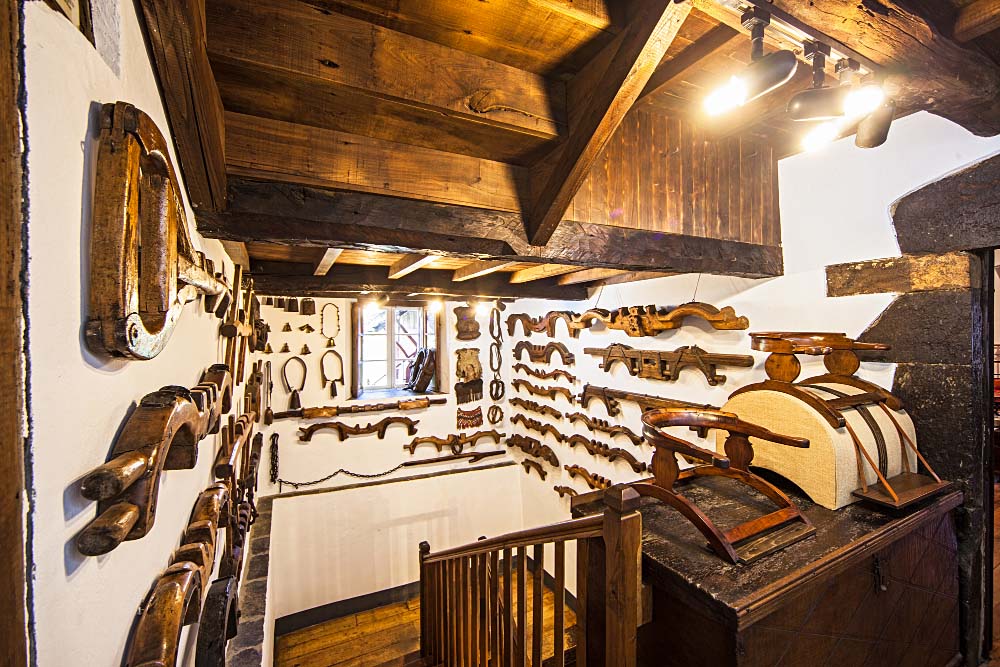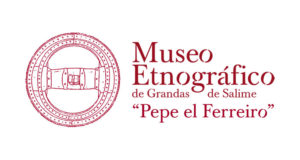The staircase that connects the two floors of the Rectory House is, in addition to being a transit space, another exhibition area of the Museum.
On the upper floor landing there is a large hucha (chest) for storing wheat or rye. Also on display is a sample of the different models of gaxapos, cachapas, zapicos, cornos or canaos, the names given in Asturias to the container used to carry the whetstone during the harvest. The reaper wore it around his waist while working and, inside, the stone is partially submerged in water to make sharpening easier and lined with grass to prevent it from swaying and the water from spilling out.
As you go down to the ground floor, you can see the large collection of xugos (yokes) of the Ethnographic Museum of Grandas de Salime “Pepe el Ferreiro”. They come, for the most part, from different parts of Asturias and also from Galicia, the Basque Country, Madrid and Portugal. This collection enables us to compare the different models of yokes that exist in the Iberian Peninsula, differentiating the ones for horns, those that are tied to the animal’s horns and which are more widely used, from the jugular yokes, a type that is attached to the neck of the cattle, restricted to some Galician areas.


